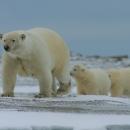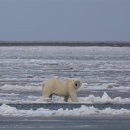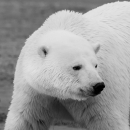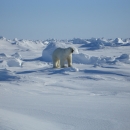What We Do
From a regulatory standpoint, we work closely with industries and other entities to prevent and mitigate adverse impacts of human activities on Pacific walrus, polar bears, and northern sea otters in Alaska, prevent adverse impacts to subsistence use of these species, and promote human safety in polar bear country. A significant component of this work is the issuance of incidental take authorizations (ITAs) under sections 101(a)(5)(A) and 101(a)(5)(D) of the Marine Mammal Protection Act. Our work includes the regulation of offshore and coastal economic development activities to ensure compliance with the Marine Mammal Protection Act, the Endangered Species Act and all other relevant laws and regulations; and application of the most current biological information in regulatory decisions.
Our Programs
Within our office, we have staff covering the following programmatic areas: regulatory issues; polar bears; northern sea otters and walruses; and marking/tagging/reporting (see menu to left).
Our Services
- Provide technical assistance and share resources on how to avoid take of polar bears, northern sea otters, or Pacific walrus.
- Issue incidental harassment authorizations (IHAs) that authorize incidental take by harassment of marine mammals for up to a one-year period.
- Promulgate incidental take regulations (ITRs) that authorize incidental take of marine mammals for up to a five-year period, and issue associated incidental take Letters of Authorization (LOAs) to specific entities.
- Issue Letters of Authorization that authorize intentional harassment (hazing) of polar bears.
- Provide polar bear awareness, safety, and deterrence training.
Quick Links
Our Projects and Research
Our Laws and Regulations
We are guided by the Marine Mammal Protection Act and U.S. Fish and Wildlife Service Regulations for Incidental Take (50 CFR § 18.27)







